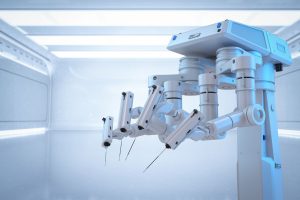Filing a Florida lawsuit for robotic surgery injuries may be warranted if adverse patient outcomes are the result of machine malfunction, surgeon error or a preventable mistake during the procedure. Such claims may be filed against the surgeon, but also potentially against the manufacturer of the robot. Lawsuits against surgical robot manufacturers would not be for medical malpractice, but rather product liability. 
The use of robotic systems for surgeries has grown rapidly in recent decades. Specialized technology has enabled these systems to deliver precision care, even in difficult-to-reach areas, such as the heart, digestive system, bladder, prostate and more. They tend to result in less pain during recovery, shorter hospital stays, lower risk of infection and smaller scars.
However, they’re also associated with a number of serious risks, such as nerve damage and compression. What’s more, their safety may be overstated, and complications underreported. In one report published in the Journal for Healthcare Quality, researchers report that of the 1 million+ robotic surgeries performed in the last 20+ years, there were 245 complications and 71 deaths reported to the U.S. Food & Drug Administration. That figure was suspiciously low. Researchers then uncovered several incidents that were reported by the news media that were never reported to the FDA, indicating intentional underreporting. It’s likely there are additional incidents that were never reported to the FDA or the media.
Johns Hopkins Medicine reported 57 percent of surgeons anonymously reported irrecoverable operative malfunction while using a robotic surgical system, requiring them to convert the procedure to laparoscopic or open surgery. Continue reading
 South Florida Injury Lawyer Blog
South Florida Injury Lawyer Blog




 The statute of limitations on Florida medical malpractice claims is
The statute of limitations on Florida medical malpractice claims is